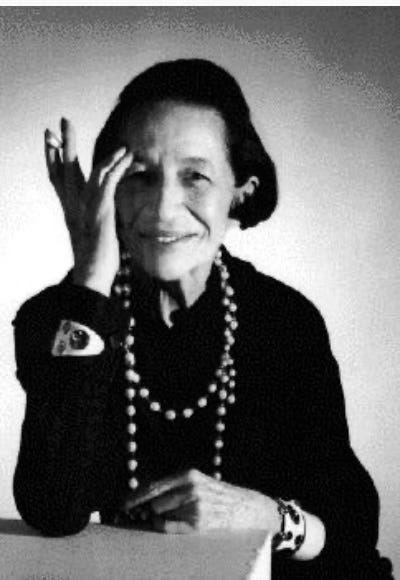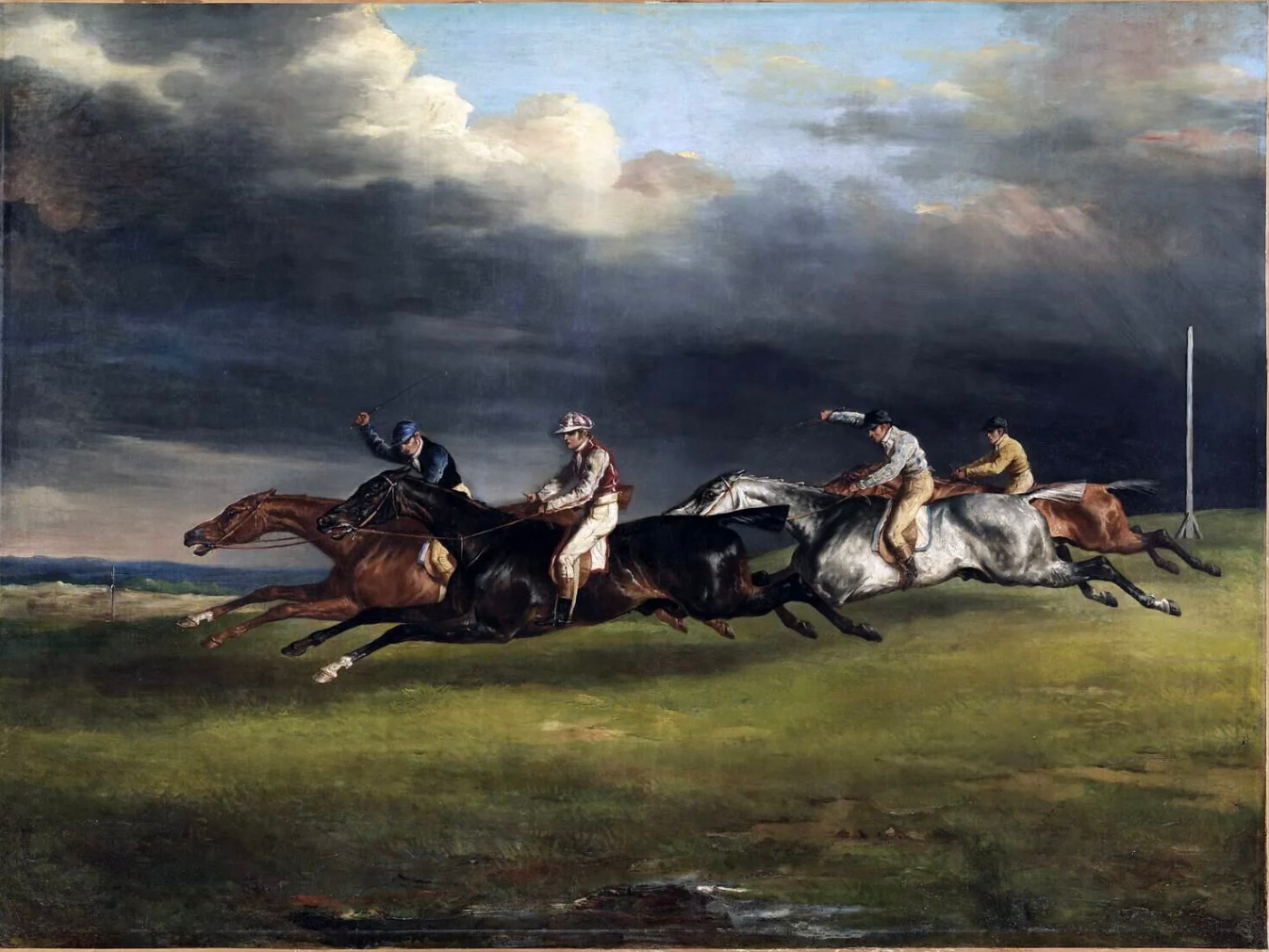Oct Meditation HERE
FREE Writer’s Summit HERE
Book Club | Support this Newsletter HERE
It’s funny how vividly it’s stayed with me, and not just because I saw it more than once.
I’m speaking of Full Gallop, a one-woman show I saw decades ago starring Mary Louise Wilson.
Twenty years later she’d win a Tony for Grey Gardens but I was already enraptured by the incredible Off-Broadway performance I saw.
Written by Wilson and Mark Hampton, the play captures an evening in the life of the legendary fashion editor Diana Vreeland.
Vreeland had just returned from a four-month escape to Europe, having been summarily fired as Editor-in-Chief of Vogue.
Despite her larger-than-life persona, Vreeland was taken aback and reportedly greatly hurt by her abrupt dismissal.
According to her son’s biography, still smarting from the unexpected blow and out of work for about a year, although living on Park Avenue, she was near-destitute.
At that time, she was 69 years old.

I don’t recall how many people I’ve assisted in handstand and headstand in the last two decades of teaching yoga.
Between classes and private lessons, it’s definitely in the high hundreds.
Here’s what’s interesting about the assist: I actually do very little.
In fact, I only do two things physically.
First, by framing a student with my thighs, I offer a feeling of support.
Second, positioning my hand in their hip crease, I gently move their pelvis a few inches towards me.
Moving into this alignment with a sense of support makes it nearly inevitable for the student to rise into the inversion.
In fact, I’ve only had two “failures.”
In both cases, it wasn’t a physical limitation––I was always careful about injuries––but a psychological one.
The fear of going upside down was simply too overwhelming.
They simply could not––as per the theme of this month’s meditation HERE––Embrace the Unknown.

I was delighted recently to be a speaker at an awesome online event entitled the Write Anyway Summit.
Click HERE or below to sign up for dozens of exciting speakers:
There’s an awesome array of authors, coaches, and editors who have found ways to overcome common obstacles to getting writing done, of getting people to overcome creative blocks.
One thing I talk about is the uncomfortable truth in life that there is no map.
Steve Jobs captured this sentiment brilliantly in his 2005 Stanford commencement address.
“You can’t connect the dots looking forward.
You can only connect them looking backward.”
There are, of course, some pre-paved and predictable pathways in life, but I’ve found that more often than not, the plot twists have a bigger impact on the story.
Jobs went on to say:
“So you have to trust that the dots will somehow connect in your future.
You have to trust in something — your gut, destiny, life, karma, whatever.”
In other words, you must learn to trust the unknown, particularly since the meaning may only be revealed in the end.
There are mysteries even Siri can’t solve.

The title of the play Full Gallop is taken from something Vreeland says in the first act.
Forced to borrow pocket change from the household staff and scrape together what’s left in the kitchen, she’s attempting to throw together an impromptu dinner party in order to gain an investor for a new project.
Phoning one of her guests to remind him to come, her response to his off-stage inquiries about whether she’s still troubled by the firing are:
“Well I WAS, but that’s all behind me now.
It’s PASSED.
I’m back up on my horse. You bet.
Full gallop!”
Not being from the horsey-set, I traveled down a mini-rabbit hole of research as I looked up the exact definition of “Full Gallop”
“Full gallop” refers to the fastest pace a horse can run.
It’s the embodiment of power, freedom, and forward momentum.
In fact, “full gallop” is when, at certain points in their stride, all four hooves are off the ground.
And that’s when my research got rather interesting.

Since thoroughbreds can run up to 55 miles per hour, until the 1870s the full gallop phenomenon as in the painting by Géricault above was impossible to truly document.
The blurry phenomenon perceived by the naked eye was generally assumed.
It was only when California Governor Leland Stanford, founder of the university that bears his name—the one where Steve Jobs would speak over a hundred years later—thought of hiring photographer Eadweard (yes, that’s the correct spelling) Muybridge to create documented proof of a full gallop, or what he called “unsupported transit.”
Requiring 12 separate cameras, Muybridge was able to capture photographic proof that a racehorse named “Sallie Gardner” did indeed have moments where all four hooves were off the ground.
Just FYI, this aside is too fascinating not to mention: Muybridge’s photographic experiment was postponed for a few years while he faced trial for killing his wife’s lover.
He was acquitted with a verdict of “justifiable homicide,” largely by blaming a head injury from a stagecoach accident a decade earlier.
(I’m not kidding and you can read more about it HERE.)
In any case, Muybridge’s images below finally proved that the full gallop effect of “unsupported transit” was real, even if the human eye was mostly just guessing at the interpretation.

Although she initially rejects the offer, even hanging up on the caller, by the end of the play, Diana Vreeland warms up to the notion of becoming the Special Consultant to the Costume Institute at the Metropolitan Museum of Art.
Many view that last period of her remarkable career––ending with her retirement at 85!––as perhaps her greatest triumph.
Indeed, she revolutionized the Institute’s profile, creating iconic exhibitions that were enormously popular.
That doesn’t mean, however, that her Embracing the Unknown was smooth and effortless.
Interestingly, this is echoed by Muybridge’s photographs.
Although classical depictions of full gallops like the Géricault painting show horses gracefully extending their legs fully out into space, in real life the phenomenon is much less fluid.
The movement is certainly beautiful, but less surefooted, less confidently stylized than a ballet move, as previous art would have us believe.
I touch on some of these concepts in my Write Anyway talk HERE, offering some reassuring tips for facing uncertainty.
Like Vreeland, at our best and boldest we may be an unstoppable force, one that the human eye can only perceive as a blur.
At the same time, since life offers us no map, unsupported transit can be quite terrifying.
Even so, there’s still comfort in knowing that you can reinvent yourself at 69 (or any age), and that you can only connect the dots looking backward, especially if you’re moving forward at Full Gallop.
Namaste for Now

